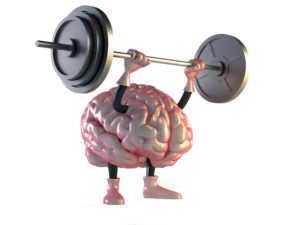
You are faced with a variety of life events and circumstances every day. Each event or situation can be viewed in a positive or negative way. Your perspective is your outlook on the world around you. According to psychologists, you are either an optimist viewing the world from the viewpoint of a glass “half-full” or a pessimist viewing the world as a glass “half-empty”. For the most part, you are not happy or sad 100% of the time but you will lean more to one or the other disposition predominantly. Which one are you?
“Optimism is a strategy for making a better future. Because unless you believe that the future can be better, you are unlikely to step up and take responsibility for making it so.”
― Noam Chomsky
The Optimist
Optimism is defined as taking on a favorable view of events or circumstances and to expect positive outcomes. Optimistic character symbols are the fish Dory from the Disney Film Finding Nemo with her positive attitude and phrase, “Just Keep Swimming” demonstrating persistence. The Donkey from the movie Shrek does not seem to let anything bother him – everything just rolls off his back. The Disney character Goofy seems to do things without doubting of things with work out; he just does. You may see these characters as overly optimistic but it helps them face any adversity that comes their way.
Optimistic people look for the good in situations and believe that most people’s actions are filled with good intentions. They have a “can-do” attitude and see negative events as a temporary setback and see these hardships as learning opportunities for growth. They persist when faced with adversity. An optimistic person practices gratitude and acknowledges what is going well. They are positive and are confident in their abilities. When optimistic people share the events of their day, they tend to focus on sharing good events over negative ones. Uncertainty does not throw optimists off track; they see unscheduled or unplanned events as an opportunity and adventure to be seized.
The Pessimist
Pessimists are in the state of mind of expecting only the worst outcomes. These people have similar characteristics to the characters of Chicken Little who created a widespread panic that the sky was falling when it was only an acorn that fell, Charlie Brown was full of dread, negativity and worry, and Eeyore who was full of doom and gloom. People with these pessimistic characteristics can wear on the patience of others and suck the energy out of a room.
Pessimistic people believe that negative events were caused by them. What power they have! They believe that one mistake leads to a Domino Effect of mistakes. If something positive was to occur to them like a promotion or winning a prize, they would attribute these successes to luck, chance, or a fluke accident and the likelihood of it ever happening again was nearly impossible.
A pessimist can cause habit in the marketplace, business, or organization. They can negatively influence their employees, colleagues, and co-workers. I have watched this happen and it can move like wildfire. They start demonstrating poor work habits, carelessness, and lack of motivation. They become distracted and disengaged with the people who they are serving. Stress increase as these individuals gossip and complain. Others start to dread coming to work. They see setbacks as permanent and they are less flexible in challenging their perspective. There is increased fear, worry, and anxiety about the future which in turn impacts productivity and performance and thus the bottom line – profits.
Ultimately, optimism beats pessimism. Optimists live longer healthier lives. They have lower stress levels because they do not allow situations and life circumstances to dictate their happiness. They tend to be more successful and have increased productivity. Optimism impacts your overall well-being – it “feels good” to be positive and uplifting.
“Man often becomes what he believes himself to be. If I keep on saying to myself that I cannot do a certain thing, it is possible that I may end by really becoming incapable of doing it. On the contrary, if I have the belief that I can do it, I shall surely acquire the capacity to do it even if I may not have it at the beginning.”
― Mahatma Gandhi
Way to Beat the Doom and Gloom of Pessimism
- Challenging assumptions by questioning your thoughts (Is your thought true?)
- Reframe negative thoughts into positive thoughts
- Learn from mistakes and adjust your course by doing it again until you get it
- “Act as if”; be who you need to be now to achieve what you are trying to succeed at. Do not wait to be in the leadership role to become a leader.
- Look for the good and what you have to be grateful for. The more you are grateful for, the more that will show up in your life to be grateful for.
Each day we have a choice. Which perspective will you choose – the optimist or the pessimist? At the end of the day, optimism beats pessimism. You cannot help wanting to be a part of the positive energy; it contagious. What attitude do you want to spread? How full or empty is your glass?
I believe it is not how full or empty your glass is what determines the quality of your life; it is about the people you meet, the places you travel to, and choices you choose to fill it with. Seize the opportunities live life to its fullest and drink up!
DEBRA KASOWSKI, BScN CEC is an award-winning best-selling author, transformational speaker, blogger, and Certified Executive Coach. She has a heart of a teacher and is certified in Appreciative Inquiry and Emotional Intelligence. Her writing has been published in a variety of print and online magazines. Debra Kasowski International helps executives, entrepreneurs, and organizations boost their productivity, performance, and profits. It all starts with people and passion. Sign up the Success Secrets Newsletter and get your free mp3 download today! www.debrakasowski.com



 Remember the brain cannot distinguish between what is real and imagined so putting yourself in the state and imagining yourself as of achieving it makes it real.
Remember the brain cannot distinguish between what is real and imagined so putting yourself in the state and imagining yourself as of achieving it makes it real. 